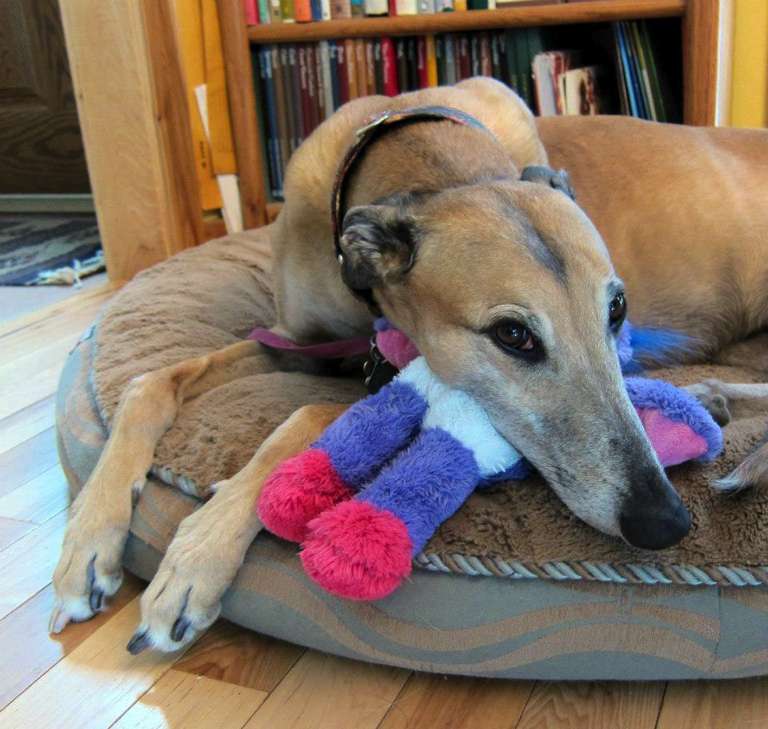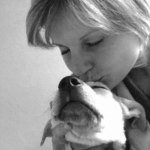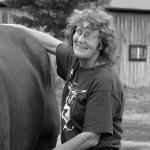
Quality of Life is defined by the dictionary as: “the general well-being of a person or society (or pet), defined in terms of health and happiness, rather than wealth.” As a veterinarian, my greatest concern for my patients is that their lives have quality, that they are not suffering. This is what is called the “Health-Related Quality of Life” (HRQOL).
The US Centers for Disease Control (CDC) defines HRQOL: “Encompassing those aspects of health… that can be clearly shown… to affect quality of life.” The establishment of standards for quality of life for our pets is very important. This way, as our pets reach the ends of their lives, or suffer from terminal disease, we are better able to make that difficult judgement when their life contains no more quality. At that time, we can humanely, and painlessly euthanize our beloved pet with the understanding that we used a universally-accepted set of criteria to judge objectively when would be the best time.
Dr. Alice Villalobos, in her textbook: Canine and Feline Geriatric Oncology established a set of 7 criteria to use when trying to evaluate a pet’s quality of life when they have cancer. This helps us to make clinical decisions regarding whether to continue with therapy or not. Dr. Villalobos, who was the first veterinarian to teach about pet hospice, and gave it the name: “Pawspice”, calls her QOL scale the HHHHHMM Scale:
HURT: Is there adequate pain control, including breathing ability. Is the pet’s pain successfully managed. Is oxygen necessary? (Scale 1-10)
HUNGER: Is the pet eating enough? Does hand feeding help? Does the patient require a feeding tube? (Scale 1-10)
HYDRATION: Is the patient dehydrated? For patients not drinking enough, use subcutaneous fluids once or twice daily to supplement fluid intake. (Scale 1-10)
HYGIENE: The patient should be kept brushed and cleaned, particularly after elimination, avoid press sores, and keep all wounds clean. (Scale 1-10)
HAPPINESS: Does the pet express joy and interest? Is he responsive to things around him (family, toys, etc.)? Is the pet depressed, lonely, anxious, bored or afraid? Can the pet’s bed be close to the family activities and not be isolated? (Scale 1-10)
MOBILITY: Can the patient get up without assistance? does the pet need human or mechanical help (e.g., a cart)? Does he feel like going for a walk? Is he having seizures or stumbling?
(Some caregivers feel euthanasia is preferable to amputation, yet an animal who has limited mobility but is still alert and responsive can have good quality of life as long as his caregivers are committed to helping him.) (Score 1-10)
MORE GOOD DAYS THAN BAD: When there are too many bad days in a row, quality of life is too compromised. When a human-animal bond is no longer possible, the caretaker must be made aware the end is near. The decision needs to be made if the pet is suffering. If death comes peacefully and painlessly, that is okay. (Score 1-10)
Over 5 is acceptable in each category. A total of 35 points or greater is acceptable for a good Pawspice.
(From: Canine and Feline Geriatric Oncology by Alice Villalobos DVM with Laurie Kaplan, MSC. Blackwell Publishing 2007. Pages 303-306.)
One of the most difficult decisions any pet owner is faced to make at some time during their pets’ life span is whether its time to euthanize or “put to sleep” their beloved pet due to the debilitating effects of a chronic or terminal disease. By using a set of objective criteria, such as the quality of life scale that Dr. Villalobos offers in her HHHHHMM Scale, one can have some help making that very difficult decision be not as subjective or subject to non-objective criteria by comparing your own pet’s quality of life with the qualities expressed in Dr. Villalobos’s Pawspice Scale.
When you are getting to that place in your pet’s life where you are starting to consider whether they might be better if they were not alive, its a good idea to not just use this scale, but to also discuss these considerations with your family, friends and with people in your life who are in a special place of giving, such as your pastor or spiritual leader, a therapist, or psychotherapist, or counselor. There are specialized counsellors who help people through issues of grief, whether it be for their beloved pet, or for a dearly departed family member. I urge you to not think that this is something you can do on your own, but instead, to reach out and ask for some support and some help and guidance through this difficult time for you over the loss of your four-legged friend.
Dr. Rob Silver
Thanksgiving 2015
Niwot, Colorado.




